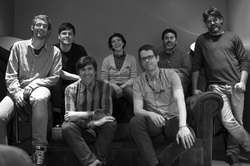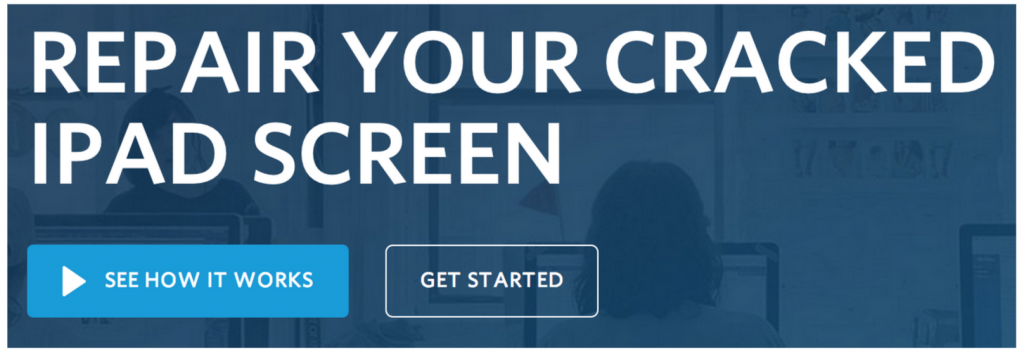|
“Fail Fast, Fail Often” and “Fail Better” are phrases that startups always hear from their mentors, and many live by (especially after reading The Lean Startup). Even though we’ve fully embraced the “fail fast” mantra to help our business succeed, the fear of complete failure is still there. Any startup has fears of failure. Failing fast and quickly learning from our failures helped the team at Digsy to get closer to product-market-fit before they went down in flames.
This is going to sound crazy, but one of their biggest failures was listening to their customers. This startup operates in the commercial real estate industry so the product is based on many, many conversations with potential customers: commercial real estate brokers. In every conversation, they asked about pain points, business processes and how technology could help them accomplish their goals more easily. They would hear the same things over and over, so they decided to build a product that solved common pain points and addressed their wants and needs. They did this twice, and they crashed and burned. Twice. Experimenting constantly and failing fast is a constant cycle for any entrepreneur. Every week, they try something new; if it fails (which it usually does), try something else. It is good to optimize, both on a micro- and a macro-scale. From minor messaging changes to entirely new concepts of how you can do business, everything is an experiment. It was through the series of small failures that kept their minds in the game, allowing them to see the big failure. The keys to successfully living the “Fail Fast” mantra are perseverance, urgency and validated learning . Failure is a depressing waste of time and money — if you don’t quickly learn something you can leverage toward success. Their goal from the beginning has been to improve the commercial real estate industry and change it for the better. The first product, BrokerRoster, was a tool intended to help commercial real estate (CRE) listing brokers find tenant rep brokers looking for space so they could pitch them their listings. While researching how to improve the product to generate revenue through innumerable conversations with brokers and other CRE professionals, they kept hearing essentially the same thing: “keeping track of leads and deal opportunities is too hard”. So it was decided to expand BrokerRoster to solve that pain point. Big mistake. They spent months building a suite of CRM-like tools giving potential customers what they asked for: a way to get more leads and a better way to manage deal opportunities. After all the hard work and late nights, the product enhancements failed. Very few used it and even fewer wanted to buy it. The second big failure came with the next iteration of BrokerRoster. They did more research and customer interviews and found that listing broker users kept telling them: “if you could find us more small tenants and buyers looking for space, that would be great.” Tenants and buyers that are in the market for commercial space are the lifeblood of listing brokers. Since their SaaS CRM product was failing, they again listened to customers and decided to start focusing on tenant lead generation. This time, they re-branded and built Digsy. There were two goals: help smaller, unrepresented tenants quickly find space AND help listing brokers to find tenants looking for properties like theirs. It was a win for the tenants — they could find space faster and easier — and it was a win for the brokers (at least, so we thought). Since the tenants were unrepresented, the listing broker would make more money, by not having to split the commission with another agent. They built a new service that customers asked for — a way to find more prospects for their listings — and in the process we figured out a way for them to even make MORE money. In exchange, Digsy would take a small referral fee when they closed a deal. In the first few weeks, they had many tenants using the service, going on tours and everything seemed to be going great. But as time went by, hardly any of the listing brokers who initially adopted the service were sending their listings to the tenants on our platform. This was of great concern, because it meant tenants were not getting serviced and, worse, that Digsy was failing. What the hell happened? Eventually, they wised up and realized they had failed big time. Crashed and burned. Kablooie. This product they spent five months on failed. The product all their customers asked for failed; they never used something they were so enthusiastic about. This time, they shut down for three days and sat in front of a whiteboard to discuss the state of business and explored the successes of every marketplace from Uber to 99designs. They dissected why tenants and buyers were using our product, while listing brokers could not care less. Three full days is a lot of time for a startup to put everything on hold, yet it was the defining moment. Taking a step back helped to see the big picture. It was discovered that the brokers using the system the most were not listing brokers. They were tenant rep brokers trying to find new tenants to represent. With this newfound knowledge, the service offering was reworked and they started connecting tenants with a personal market expert (broker) to help them save time & money finding commercial space. They created an on-demand network of the best market experts to help tenants & buyers find space, where the first expert to respond to a tenant or buyer request would get the business. Through these trials and tribulations, they stumbled on a product that was like Uber for commercial real estate. In the first week of modifying service they closed two deals. In the previous five months they had closed zero. Docstoc founder Jason Nazar recently shared his philosophy on failure: “Failing, as other people may see it, for me and for many other entrepreneurs, is simply part of the process of iterating until you find that thing that is meaningful and worthwhile.”JASON NAZAR, CEO – DOCSTOC A big lesson: Your customers are everything, but failing fast is only great if it is for the sake of your real customers . ___________________________________________________________________________________________ This is an edited version of a post originally posted at http://www.getdigsy.com/, by Kyle Pinzon, the Director of Customer Success at Digsy .You are free to re-edit and repost this in your own blog or other use under Creative Commons Attribution 3.0 License terms, by giving credit with a link to www.startupcommons.org and the original post. As Marc Andreesen famously wrote, market need is more important to early startup success than team or even product. So before you go out and start coding, here are 5 fast ways to test your startup idea is even worth pursuing in the first place #1 – Are people interested? Check with Google and Facebook There are some great free tools that can help you gauge interest in a category in order to start a business. For example – Google trends tells us organic food is declining in search volume, whereas vegan food is on the rise: Digging into the details, the Google keyword tool tells us there are a high number of searches in the US for vegan seitan, tofu and more, yet according to Google there is low advertiser competition – that is, less people bidding to appear with those keywords. A low advertiser competition can sometimes signal potential – a consumer demand with little competition from suppliers. And using Facebook’s free ad manager can tell you size of demographic segments, for example those between 21 and 55 years old in the US who are interested in Wellness related topics (64 million people). #2 Ambush focus groups There is no substitute for talking to real users, but it’s easier said than done. Before starting your startup you need feedback so you can validate the idea. But friends rarely give you honest/negative feedback and response rates for unsolicited emails are abysmally low. However it’s easy to speak to potential users – go to a place there are a lot of them in one place, waiting. #3 Put up a simple landing page and A/B test the message It takes literally under an hour to register a domain, buy a landing page template and customize it so it looks like a real service. Once it’s up you can then integrate an A/B testing services like Optimizely or VisualWebsiteOptimizer (they both are great products with free trials) and create variations of the messaging or title. vs You can then submit the site to various forums or on social media (Product Hunt, Hacker News etc) asking for feedback, and see which proposition results in the most interest and activity on the site, as measured by click rates on the call to action buttons.
This A/B testing can help you test different concepts and messaging in parallel, and see out of them which has the most potential to consider moving forward with. #4 Compare what’s out there today Many startups are so enamoured with their idea they forget to check what’s out there already (or has been tried before). On the flipside, new opportunities can be found by looking at bad experiences. #5 “Feedback-ify” your MVP If you’ve done all those steps and the startup idea has survived, the confidence factor is a lot higher to proceed. Once you’ve created a minimum viable product, now matter how rough, now’s the time to get as much feedback as possible. The best ways to do that are through statistics packages like Flurry which will tell you what is happening, and in-app / web survey tools like polljoy that will tell you why: what users think about your product. Both of these tools are free, and the qualitative and quantitative data will start to give an answer on if your concept has legs and ready to take to the next step. ___________________________________________________________________________________________ This is an edited version of a post originally posted at https://polljoy.com/blog/, by Simon Newstead, who is entrepreneur and angel investor, with a passion for the mobile and gaming space. Simon is currently the CEO and Co-Founder of Frenzoo, and Co-Founder of polljoy. You are free to re-edit and repost this in your own blog or other use under Creative Commons Attribution 3.0 License terms, by giving credit with a link to www.startupcommons.org and the original post. How do you know whether your idea you have is worth your time and effort? Wouldn't you like to find out it as soon as possible?
Many people put their ideas on the back burner, uncertain if they have potential or daunted by the amount of money they'll need to get started. It doesn't have to be this hard. There are four questions that will help you predict whether your startup idea will be succesfull or not. 1. HOW BIG IS THE PROBLEM? Before doing anything else, figure out if you're solving a real problem and for who you are solving it for (the customer). If you have a sense of who your customers are based on previous interactions, go interview them. Set up a coffee meeting or a phone call to ask them a few questions and further understand how you can solve for their needs. Conducting effective customer interviews takes practice and interpreting the qualitative data that they provide can be subjective. You can use the problem interview scoring technique to quantify results and make a faster decision based on the score. An interview score of 25 or higher indicates that you're onto something with the problem you want to solve. 2. HOW MUCH WILL CUSTOMERS PAY FOR YOUR SOLUTION? If you're not sure who your customers could be or have a few ideas you want to test quickly, start with a landing page experiment instead, then interview people once they sign up. Include a price point on your landing page and use Google Adwords to drive targeted visitors to your page. Measure the number of visitors who convert and leave their emails based on the price you set. Aim to get a 10 percent to 15 percent conversion rate to proceed with your idea. Test different price points and determine the value of a customer even before building your business. You can use QuickMVP to set up this experiment in five minutes. 3. HOW MUCH DOES IT COST TO ACQUIRE EACH CUSTOMER? After you've validated that people will pay you to solve their problem, figure out how much it costs to get more people to your product. Paid Ads are a good technique to calculate Customer Acquisition Cost (CAC) early on since it gives you a representative customer sample and their conversion rate. -> Customer acquisition cost = Total spent on ads/# of paid conversions on landing page To build a sustainable business, the acquisition cost should be significantly less than what customers pay to use your service. 4. HOW BIG IS THE MARKET & HOW ACCESSIBLE IS IT? Now that you've acquired a handful of customers, can you get 1,000? 10,000? Is the opportunity big enough? Find out early. Many startups have shut down because they could not acquire enough customers. To get an idea of your market size, look at the search volumes of relevant Google keywords. Find uncompetitive keywords with a high search volume to reach a large market at a low acquisition cost. If your keywords are popular but competitive, you're entering a saturated market and will have a harder time scaling. Next time you have a great idea, jot it down and test it with these four questions. The sooner you test your ideas and get answers, the sooner you'll know which idea is worth pursuing. All it takes is a landing page and Google Adwords to get started. _________________________________________________________________________________________ This is an edited version of a post originally posted at http://www.iafrikan.com/ by Grace Ng who is a Co-Founder of Javelin, an enterprise software and services company for implementing Lean Startup. You are free to re-edit and repost this in your own blog or other use under Creative Commons Attribution 3.0 License terms, by giving credit with a link to www.startupcommons.org and the original post. Most entrepreneurs just use customer interviews for data, but there are easy ways to turn these potential customers into paying clients. The lean startup methodology took what they taught in MBA classes and turned it upside down, completely changing the way most of us thought about entrepreneurship. No longer was starting a business about projections and management titles. Instead, it changed into experiments and data.
While customer interviews are a big part of finding your value proposition, they also can be a perfect time to build leads. Just because you're still looking to find insights doesn't mean you should stop selling. With a little preparation, you can discover insights about your business model and score a sale. Here are some ways to do both. Step 1: Once you identify their problem, dig deeper It's essential that when you start interviewing customers, you don't have any loaded questions. You want the people you're interviewing to be completely open with you. Swaying or selling them too early will ruin the advice you need for your business. Often you can tell you're getting good data if your customers start getting emotional about the problem. When you hear this, they've given you a path to future business. Once you identify the problem that's causing them stress, dig into the problem deeper. Start by asking what's been the cause of the problem, and ask them how much they are spending to fix the issue right now. Go into how much time they are spending trying to solve the problem. After a few minutes, they'll start spouting off valuable information. This not only gives you information but also opens up your customers' minds about how important the problem is. No one typically takes the time to ask the questions you're asking, so many customers don't think of finding a solution. When you open up customers' minds about how big the obstacle is, they'll become more interested in what you're doing. Step 2: Pitch a solution, even if you don't have one After customers've found the problem, this is where most entrepreneurs stop their interview. Happy with the data they gathered, they thank the person for his or her time and walk away. When you do this, you miss a perfect opportunity to generate business. Here your customer is with a huge problem, and you're going to walk away? No. Instead, pitch a solution, even if it's off the top of your head. When I tell people this, they usually ask, "Why would I pitch a solution that I haven't built?" The answer is because you want to find out exactly what needs to be built to make revenue. Next time you're in this situation, pitch them a hypothesis you have that you think will work and see how they respond. If they don't like it, awesome--you shouldn't build that. If they do like it, now you can ask them if they'd be interested in your showing them a demo in the future. If they answered yes to liking your solution, they'll almost always be open to seeing a demo. Now you know your customer's problem, and know at least one solution a customer would be interested in buying. Step 3: Track results and close sales Don't stop interviewing customers once you have one who you've sold your solution to. Instead, keep conducting interviews until you get to about 100 quality ones. Then look back at the interviews and see which was the most successful solution you pitched. What were customers willing to pay for? Once you've looked at the data and you have enough customers to make it worthwhile, contact those customers. Schedule a demo in the future and build your minimum viable product in the meantime. While the product is being built, schedule more interviews. Next, build some quick mockups and start showing them around. This could also be a great time to raise early capital if you need to. Most entrepreneurs think you need a finished product to raise capital. False. Investors will tell you that it's much better to have 10 customers lined up and no product than it is to have a finished product with no buyers. Most companies don't fail because they never get a product off the ground. They fail because they can't get sales. ______________________________________________________________________________________________ This is an edited version of a post originally posted at http://www.inc.com/ by AJ Agrawal who is an entrepreneur, writer, and speaker. He is the CEO and co-founder of Alumnify Inc. You are free to re-edit and repost this in your own blog or other use under Creative Commons Attribution 3.0 License terms, by giving credit with a link to www.startupcommons.org and the original post. Alberto Savoia defines pretotyping as “building the right product before you invest in building your product right.” His book “Pretotype It” lists a set of seven techniques for pretotyping. Additionally, this post highlights other five ones that should be included. Seven Basic Pretotyping Techniques:
Additional five techniques:
Take a look at Savoia's new technique: The One Night Stand. Primarily aimed at retail innovation it says you can create “a complete service experience without the infrastructure required by a permanent solution. Here are some details from the “Pretotyping Cheat Sheet” by Leonardo Zangrando ([email protected]):
Three situations where this is most appropriate:
Are you a consultant or an entrepreneur? - Learn more about Growth Academy Online Training & Certification Programs Download our startup booklet and watch our videos to learn more about our framework to help startups to grow without "reinventing the wheel" and without wasting lot of time trying to connect the dots. The framework is based on the startup development phases and aims to remove the highest universal risks on the startup journey. ______________________________________________________________________________________________
This is an edited version of a post originally posted at http://www.skmurphy.com, by Sean Murphy who has worked in a variety of roles: software engineer, engineering manager, project manager, business development, product marketing and customer support. You are free to re-edit and repost this in your own blog or other use under Creative Commons Attribution 3.0 License terms, by giving credit with a link to www.startupcommons.org and the original post.  Start-up ecosystems around the world are scaling new heights. Startups raising millions of dollars and numbers are growing. Here are 9 things to consider before raising funds for a start-up: 1. Never have more than 3 founders Too many cooks spoil the broth. Having 2-3 founders is an ideal choice. In case you need more experts, you can always hire them. In rare cases more than 3 founders stick together; if the number is more, ultimately, it boils down to 2 or 3. Having one founder is also a bad option. Having different perspectives and divided risks is always a favourable position to be in. 2. Analyse the market; the idea may be good, but the market may not be ready It is primarily important to interpret the existing market scenario in terms of your idea. Broadcasting your idea at the right time is where most of the startups fail. Therefore, first analyse the market and then take a call. If needed keep patience and wait for the market to develop according to your perspective. 3. Pick the right mentors Having the right mentors to guide you and help you manage risk is a blessing in disguise. Even though there are no hard-and-fast rules of choosing a mentor, make sure that your frequency and belief matches. A mentor should believe in your idea and ambition, as a result, making your journey easy and a learning experience. 4. Maintain your accounts A list of expenses of the previous and the upcoming months should always be maintained. This helps you keep track of where the money is going and how much money will be needed. As a result, while going to an investor, you can always show them the accounts and logistically present the amount of funds required. 5. Ensure financial stability in your personal life Giving up an existing job to start a venture is quite a challenging task. Knowing well that the risk may or may not bear fruit, it is of utmost importance to ensure that all the debts are cleared. Also, make sure that the medical insurance, family savings and credit cards are in place. Alongside, keep a minimum runway of 9-12 months. Once all the basic things are taken care of, it will become easier for the risk taker to concentrate on his venture. 6. Family money Keeping personal reputation at stake is riskier. Considering that most startups fail, ideally, family money should not be more that 5-10% of the total investment. 7. Consider funds as a bonus Planning a startup on the basis of bootstrapping is considered to be an ideal one. This helps you concentrate on your business completely rather than hunting for an investor. Also, this will help you control the company completely without any pressure from outside investors. 8. Go to 3-4 investors see what they are asking for Meeting an investor can be a learning experience. Listen to all the questions he asks for after you give your presentation and make a note. Remember, those are the areas the investor is not comfortable with. The more you meet investors, the more you will be able to understand the loop holes in your venture. 9. When a startup does not work, it is good to accept it The bitter truth is that approximately 80-90% of start-ups fail. It is good to make your call and move on if things don’t fall into place. Of course, this should be the last resort but as a risk taker, remember that at times you need to let things go. ___________________________________________________________________________________________ This is an edited version of a post originally posted at yourstory.com, by Richa Maheshwari (reporter from Yourstory.com). You are free to re-edit and repost this in your own blog or other use under Creative Commons Attribution 3.0 License terms, by giving credit with a link to www.startupcommons.org and the original post. It is very typical to measure mature of startups ecosystems in terms of new startups, growing startups, investors, investments, exits, etc. and it makes sense as cities use these statistics in the best possible way to communicate their economic growth at high level and to attract other relevant people, investors, big companies, more entrepreneurs and other stakeholders. These indicators are however the result of many smaller activities present in a startup ecosystem that contribute to these higher level results - as any startup ecosystem is the sum of multiple variables of an unbalanced equation inherent to the interactions of the startup ecosystem itself. So, as you can figure out, you need much information to talk about matureness of startups ecosystems. But most of all, you need a good understanding and analysis of your startup ecosystem at different levels and mapping it usually is a good starting point to set up new strategies and achieve a better economic development. But the thing is that properly mapping a startup ecosystem is more than just to create a good map to show who is who in your city or region. It is crucial to work at different levels and in more detail:
We truly believe everyone should work on this model, as it makes the investments to growth and innovation truly visible and measurable - as only the things that can be measured can be improved. And the faster the feedback loop, the faster things can be improved. Actually we are working with this model with few key cities like Helsinki at ecosystem level and even more broadly with independent organizations and we are clearly seeing that it is possible to build a vibrant startup ecosystem in a city in three to five years, what is half or less, compared to known average. Future entrepreneurs and current startups deserve this new scenario that we at Startup Commons are creating and we encourage others to contribute and develop innovation, better, faster and with less resources. Are you a consultant or an entrepreneur? - Learn more about Growth Academy Online Training & Certification Programs Download our startup booklet and watch our videos to learn more about our framework to help startups to grow without "reinventing the wheel" and without wasting lot of time trying to connect the dots. The framework is based on the startup development phases and aims to remove the highest universal risks on the startup journey. This is an originally posted by Óscar Ramírez, CEO Startup Commons. You are free to re-edit and repost this in your own blog or other use under Creative Commons Attribution 3.0 License terms, by giving credit with a link to www.startupcommons.org and the original post
 Is your team working hard but running blind? Sami Linnanvuo, CEO & Co-founder of Screenful Oy, and his team found the solution that keeps teams constantly informed of their progress. Screenful is still in a progress of finding the best Product Market Fit and is about to scale. Describe Screenful in under 50 words. Screenful develops business dashboards that help companies to track and optimize their operations. A key part of the concept is the introduction of large touch enabled screens as a new medium for sharing information in a modern office space. We call them Information Radiators since they "radiate" relevant information for the people working in that space, or for those passing by. Tell us the Screenful story. How and why was this project born? Screenful was born out of frustration with the current business intelligence tools on the market. In today's fast paced business, tracking your key metrics is essential as it enables you to foresee possible issues so that you can take action proactively, rather than do firefighting later. However, BI projects are notoriously expensive and the results are often poor due to the complexity of integrations and the lack of UX skills in the dashboard design. We wanted to make life easier for our customers by doing all this work for them and creating set dashboards that are both actionable and beautiful to look at. Since we've automated the whole process of setting up the dashboards, we can have new customers up & running in a matter of days or weeks rather than months as in traditional BI. How do you see the future of Screenful in 5 years? Well, that seems like an eternity in the life of a startup where lots of new things are happening every week. I'd expect that in 5 years we've made our name known internationally and we have operations outside Finland. By that time I hope that the hardware has evolved as well, making it possible to realize the whole product vision we have. We believe that in 5 years, large touch screens will be commonplace in offices and Screenful will be the leading vendor providing content to those screens. Could you share with us how you validated your product? We followed the lean startup principles, and validated our hypotheses through customer interviews before committing to actually build the product. The learning we got from those interviews led to our first pivot, which wasn't so much about changing the core product offering, but about finding the right target audience. There was no way we could have figured that out without discussing with potential customers early on. We're still applying these tactics whenever planning new features. We are not ashamed of using "slideware" in our product demonstrations. If it turns out that there's no demand for the shiny new feature that we're about to build, we can just abandon it without much time invested. What one piece of advice would you like to give to those who want to transform an idea into a business? Think of ways to do validation early on before committing resources on actual implementation. In most cases the product that you plan to build can be emulated with something much simpler, e.g. using mockups instead of real UI, replacing automation with manual steps etc. Seek for feedback and talk to potential customers. Keep your eyes and ears open, and don't fall in love with your initial ideas. Screenful was founded in 2013. What are the main challenges faced so far? When you start a new business you start from zero. You have no team, no product, no customers. Typically, at this stage you have no access to investors' money either. So what you need to do is to acquire a team who's willing to work without salary to get the demo ready, so you can start approaching customers and investors. There's no manual for these very early steps - you just have to be creative and sort it out somehow. Perhaps the biggest challenge is to stay optimistic even though all odds are against you. It's all about selling your ideas - to your spouse, your team members, your investors, your customers. If you don't believe your ideas yourself, then you can't sell it to others so you first need to sell it yourself! What are you most excited at the moment? I'm ultimately a product guy so I'm constantly excited to see our product vision becoming a reality day by day. Also, seeing that our team dynamics work and we're getting things done without glitches makes me believe that we're ready for whatever challenges we might face down the road. Startup Ecosystem in Helsinki is doing pretty well and it is becoming into a hot spot in Europe Startup Scene. What kind of services are you receiving from them? What do you miss? We have indeed very active startup ecosystem in Helsinki nowadays. We have some great events, meetups and all sorts of coaching programs for growth startups. It's not always been like that and I recall the times not so many years ago when none of this activity existed. We're finally even seeing some co-working spaces popping up, which we've lacked so far, as evidenced by the army of people working with their laptops in cafes. I'm looking forward to see those empty office spaces or warehouses converted into modern co-working spaces as they've done London and other major startup capitals.  Living Indie Team Members Living Indie Team Members Andrés Sánchez dreamed concerts live music, like football, would eventually be enjoyed with friends in the living room or favorite pub. And a year ago I think Living Indie to make that dream from London, with a partner in Galicia, Jorge Fernandez, and one in Málaga, Alfonso Fiz. Since then this startup have offered 15 concerts in Spain and London, with over 30,000 views and a community of 5,000 users. A work that caught the attention of Wayra, Telefonica Accelerator, which selected for Living Indie Academy of startups in London earlier this year to start their acceleration process. It's the time of #validation to be able to move into scaling. How would you define Living Indie? We are an online streaming platform offering a new way to experience and enjoy live music. We aim to be the Netflix of live concerts. Tell us the Living Indie story. How and why was this project born? The origins of Living Indie stem from when I was doing an MBA at Cranfield School of Management. Before the MBA I used to run a small music festival called JamonPop with some good friends, so during the MBA I started working on an idea that would offer something new and exciting that also incorporated the current mega-trends in music consumption, live concerts, streaming and video. During this time some classmates helped me shape the idea and build an initial business plan. At the end of the MBA I decided to follow up with the idea. Jorge Fernandez, an ex-colleague and programmer, joined the project. We launched in April 2013 and in May an old friend of mine, Alfonso, joined the project too. One of my fellow MBA students, Niels Footman, got progressively more involved and recently became a partner too. What are you doing different from your competitors? We think that the simplicity of the idea is one of its great strengths. Unlike some other startups, who may at first find it hard to convey clearly exactly what it is they offer, everyone gets us straight away. Regarding the competitors, while they all offer fantastic stuff, we provide, via our own portal, a new, more socially oriented way to experience live music. We have quite a specific niche, targeting high-quality, cultish or up-and-coming bands that can't usually get this kind of exposure, and we offer our users a curated way of discovering the latest trends in contemporary music. Our ultimate aim is to become the Netflix of live concerts, and we feel there is no one delivering this at the moment. What kind of partnerships are you achieving? We are working with all the parts of the music industry, from the labels, to the promoters, from the venues to the media and we also partner with brands interested in music. It’s a quite complex environment and we think we offer a win-win approach for all the parts involved What are you most excited about at the moment? The potential of the UK market is amazing, it’s a hard one but we’re finding our way. We are really excited about broadcasting live what is happening here in London. This is the hottest spot in music in the world together with New York and we want to offer to the music fans the possibility to follow the new sounds and cool bands that are playing here and that are defining the music of the future. Recently, you have become part of the accelerator Wayra in Uk. Which were the main factors to achieve it? I’d say that is the idea but more importantly how you’re executing it and the team you build. Apart from that you’ve to be really careful with the application, provide good research data, make it really professional and spend time to impress the jury. Also at the end the pitch is crucial, so you better get ready. Which are your main challenges in this phase? We are all small startups so the challengue is to provide a service that provide a valuable experience and generate buzz to get to be known. How can the Internet help the music industry? Well, it’s long time that is helping to musicians to spread their works but as always big corporation try to get the most of it and squeeze the artists. I’d say that for the user this revolution has been great but it has blown away the music industry. Right now we are setting the roots of the future industry, there are many opportunities but also many competitors and it will never be the same. It’s a much more complex market and to monetize is not easy at all. You are based in Spain and England. What’s the startup ecosystem like there in each country and what differences have you noticed? I know the UK scene quite well but not that much the Spanish one. Before coming to UK I was not that involved in the startup scene but we could do a parallelism with the music industry. Here in London the scene is like 5 times bigger so there are more opportunity and at the same the competition is harder. Anyway the economic situation in Spain has raised the entrepreneurship spirit what is really good. Creativity is a part of the Spanish people so hopefully great ideas will come up from there. What one piece of advice would you like to give to those who want to transform an idea into a business? If you are in the early stage, you need to do lots of research. You may think your idea is unique but it’s not. Identify the size of the market, is it growing exponentially?, what are you going to do differently from any other player? And by the way, how are you going to make money? |
Supporting startup ecosystem development, from entrepreneurship education, to consulting to digital infrastructure for connecting, measuring and international benchmarking.
Subscribe for updates
Startup ecosystem development updates with news, tips and case studies from cities around the world. Join Us?Are you interested to join our global venture to help develop startup ecosystems around the world?
Learn more... Archives
December 2023
Categories
All
|
- Startup Commons
- Business Creators
-
Support Providers
- About Support Providers
- Learn About Startup Ecosystem
- Startup Development Phases
- Providing Support Functions
- Innovation Entrepreneurship Education
- Innovation Entrepreneurship Curriculum
- Growth Academy eLearning Platform
- Certified Trainers
- Become Growth Academy Provider In Your Ecosystem
- Growth Academy Training On-Site By Startup Commons
-
Ecosystem Development
- About Ecosystem Developers
- What Is Startup Ecosystem
- Ecosystem Development
- Ecosystem Development Academy eLearning Platform
- Subscribe to Support Membership
- Ecosystem Operators
- Development Funding
- For Development Financiers
- Startup Ecosystem Maturity
- Case Studies
- Submit Marketplace App Challenge
- Become Ecosystem Operator
- Digital Transformation
- Contact Us
- Startup Commons
- Business Creators
-
Support Providers
- About Support Providers
- Learn About Startup Ecosystem
- Startup Development Phases
- Providing Support Functions
- Innovation Entrepreneurship Education
- Innovation Entrepreneurship Curriculum
- Growth Academy eLearning Platform
- Certified Trainers
- Become Growth Academy Provider In Your Ecosystem
- Growth Academy Training On-Site By Startup Commons
-
Ecosystem Development
- About Ecosystem Developers
- What Is Startup Ecosystem
- Ecosystem Development
- Ecosystem Development Academy eLearning Platform
- Subscribe to Support Membership
- Ecosystem Operators
- Development Funding
- For Development Financiers
- Startup Ecosystem Maturity
- Case Studies
- Submit Marketplace App Challenge
- Become Ecosystem Operator
- Digital Transformation
- Contact Us










 RSS Feed
RSS Feed

